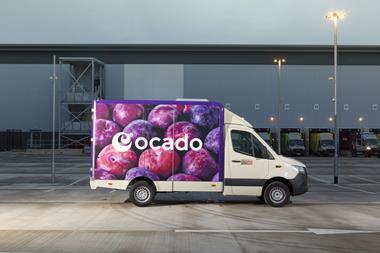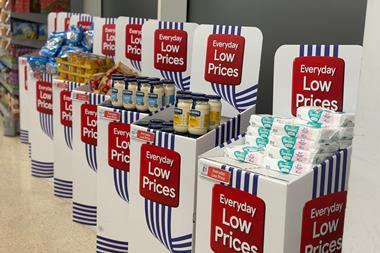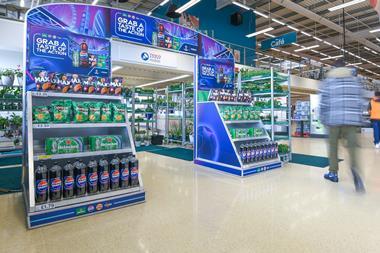The online grocery channel is growing at a phenomenal speed. But are your products discoverable to shoppers? And are you ready to win on the digital shelf?
It is no secret that 2020 brought an onslaught of challenges, including a global pandemic that upended consumers’ way of life. With many countries experiencing widespread lockdowns throughout the past year, e-commerce quickly became a go-to for shoppers across the world. While the omnichannel shopper was not initiated by the global pandemic, it was certainly accelerated by it, dramatically elevating shoppers’ use of both online and offline channels, whether for click-and-collect, contactless delivery or an array of other fulfilment options. It has transformed the way shoppers interact with the products they love, the way they shop and the way they conduct many of the routine transactions of life.
Today’s shoppers are less concerned about the actual act of purchasing but more about the holistic, omni-powered browsing experience. Omnichannel shoppers have changed their expectations of what a shopping experience should be. With the power of choice that shoppers now have on what, where and how to buy, they are leveraging the tools available to them to navigate and refine the retail experience that best suits their needs.
Shopping experiences are now being shaped by ‘need to know’ desires, with shoppers questioning where the product is from, how it was sourced, whether it’s recyclable and whether it suits their intolerances. The list continues and expands across the ever-growing retail landscape of brick-and-mortar stores, e-commerce channels and social shopping platforms. NielsenIQ data highlights the acceleration in digital, with e-commerce continuing to drive top-line growth as shoppers adjust to living alongside Covid-19; in fact, the UK FMCG online channel has experienced 44% sales growth1 year on year from 2020. As businesses around the world consider how to navigate the post-pandemic environment, it is paramount for brands and retailers to recognise the recent expansion of shopper touchpoints and consider how to adopt their digital solutions to better serve shoppers at scale.
Why it is time to take your product to the next level
The online channel has never been so competitive. The omni-shopper spends just seconds looking at the digital shelf . This is a critical time during which they will make a swift decision to buy or move forward and look at competitor products. Since the global pandemic, 79% of shoppers2 have made purchasing changes that impact their loyalty and, furthermore, over a quarter have made brand or store switching changes3, causing the gap between shoppers and brands to increase.
“It is the greater demand for additional product data that is driving the disconnect between shoppers, brands and retailers”
The basic back-of-pack product data – including product description, ingredients and nutritional information that was once enough for shoppers to make an informed purchasing decision – is no longer sufficient. It is the greater demand for additional product data that is driving the disconnect between shoppers, brands and retailers.
According to recent NielsenIQ research, 2021 has been a year of recalibration and reflection, seeing health and wellness become the single most powerful consumer force of 2021. In fact, 48% of global shoppers4 are proactive in their health decisions, impacting shopping purchasing choices dramatically. Today’s shoppers do their homework when it comes to product ingredients and additional product data such as sustainability. With 200 million shoppers following a specific diet or health-related program and 180 million shoppers having allergies or food intolerances5, it is no surprise that shoppers require this additional product data. In many cases, some shoppers forgo brand loyalty to meet their health & wellness or lifestyle needs, such as coeliac, vegan or sustainable. More than 70% of shoppers6 now look for specific product features when choosing a brand.
As part of the changing landscape, 77% of global shoppers have stated that they expect product labels to be more specific7 and transparent and 75% of shoppers are now likely to switch to a brand that provides more product information beyond the label8. On top of this, 84% of brands9 fail to claim at least one of the top three most searched attributes – linked to health and wellness, intolerances and sustainability – meaning shoppers’ needs are not able to be met. Simply providing back-of-pack product data on the product page and expecting the shoppers to trawl through products to find the one that best fits their needs is no longer acceptable. With the shift from brand to needs-based shopper purchasing behaviours, there is a big opportunity for brands to optimise their products for search. Brands need to utilise metadata and differentiate their products to stand out from the competition and add value to the shopping journey by removing any friction.
Winning on the digital shelf
Data is the driving force behind enabling exceptional shopping experiences. Whether that’s optimised attribution, content completeness, enhanced content, category penetration or ratings and reviews, all these data points drive the shopper experience. When shoppers look for products, it is curation – or the search and discovery experience – that triggers the opportunity to grow share of voice and, in many cases, share of wallet.
“It is the responsibility of retailers and brands to carefully orchestrate unique product content that resonates with shoppers’ needs”
With more than 100 data points available, the experience should be much more contextual, personalised and shopper-orientated to simplify how shoppers discover, engage and connect with products. The shopper needs at each retailer, channel and touchpoint are different. It is the responsibility of retailers and brands to carefully orchestrate unique product content that resonates with the shoppers’ needs; whether it be additional product data on allergens, health & wellness or sustainability, this information powers shoppers to make informed purchasing decisions along the path to purchase.
There are three key steps that brands should undertake to accelerate product discovery and differentiation, as recognised by Nielsen Brandbank experts:
1. Measure your content health score, to expose the gaps in your product content and identify the strengths and weaknesses, enabling you to highlight the opportunities to improve and differentiate against competitors.
2. Utilise the full range of product attributes available for your B2C content to deliver optimised and enhanced product data to your shoppers, improving product discovery across your whole category.
3. Go beyond your on-pack product data and deliver best-in-class product content to your retailers and shoppers, increasing speed-to-market and strengthening brand loyalty.
Put simply, if it isn’t measured , it can’t be improved.
Brands need to master the shopper journey with content health and advanced product data to strengthen the acceleration of accurate and quality product data to the digital shelf. Brands should strive to create a shopper-orientated experience that not only offers excellent value to shoppers but also enables them to win the battle of shopper loyalty and accelerate product growth across all channels.
To learn more about how you can accelerate your product discovery and differentiation, please click here.
Sources
1 NielsenIQ, Retail measurement data
2-3 NielsenIQ, Unlocking Consumption Global Survey
4-7 NielsenIQ, An inside look into the 2021 global consumer health and wellness revolution report
8 FMI, The Transparency Imperative
9 Activating Attributes Report, Label Insight

Nielsen Brandbank is the leading provider of digital product content solutions enabling more than 52,000+ brands and 700+ retailers and wholesalers across the globe in over 39 countries to deliver the best shopping experience by giving them the ability to capture and share rich digital product content on all channels seamlessly. Nielsen Brandbank’s end-to-end solutions connect shoppers to the most up to date and relevant digital product content making consumer goods more discoverable and engaging.
For more information please visit https://www.brandbank.com/
View full Profile



















